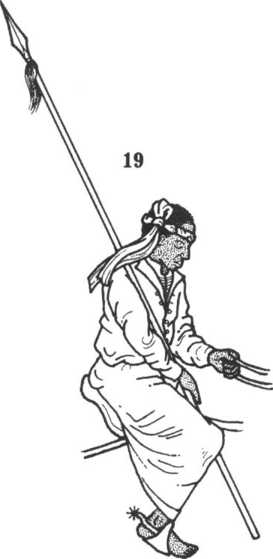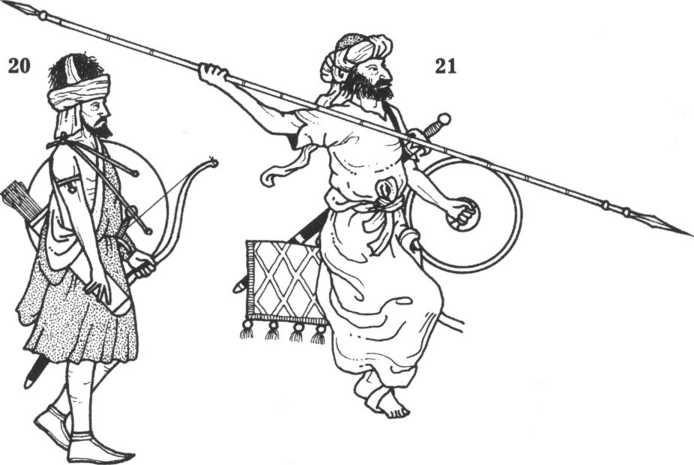
Despite the fact that 13th-15th century Western European sources frequently refer to large numbers of infantry appearing in Mamluk armies, contemporary Moslem sources make such little mention of them that it would seem their presence on the battlefield was uncommon, not to say rare. They certainly appeared in sieges and in fortress garrisons, but are only occasionally referred to in the field, and even then appear in small numbers (generally only a few thousand, and usually heavily outnumbered by their cavalry). Nevertheless, even the Moslem accounts admit to their occasional use in battle throughout this era, right

Up until the fall of the kingdom in 1517, and significantly at least one Mamluk military manual (dating to c. 1400) describes their battlefield role in some detail. They seem to have been provided chiefly by Bedouin Arabs, al-Ashir or mountaineers, plus some horseless halqa.
A report drawn up for King Henry II of Cyprus in 1311 describes the Mamluk infantry as poorly-armed, carrying only bows, and unable to stand up to Christian crossbowmen. A century later Gilbert de Lannoy similarly described them as ‘a miserable race, clothed in a shirt without stockings or breeches, their head covered with a turban. . . they have few bows, swords, or any kind of defensive weapon’. However, the ‘common foot-soldiers along the coast of Syria’ he described as ‘armed with a bow and arrows, and a great many of them have swords.’ These latter are probably the al-Ashir or Druzes, who in addition provided cavalry. The particular figure depicted here is one such, and comes from ‘The Reception of Ambassador Domenico Trevisiano at Cairo’, a painting by a member of Gentile Bellini’s school usually attributed to c. 1512 (the date of the embassy), but in fact probably portraying an earlier embassy to Damascus and predating Bellini’s death in 1507; L. A. Mayer’s Mamluk Costume actually mentions that a type of hat (the taqiyya) depicted in the painting was only worn in the period 1481-1501. He is armed with a shield, bow and sword, and has bared his right arm, presumably for easier use of the bow (Furusiyya manuals stating that in training too archers often rolled up their sleeves). His tunic is blue with a white lining, shoes are red-brown, the shield dark brown, and his hat is a red zamt with a white turban wrapped round it.




 World History
World History









